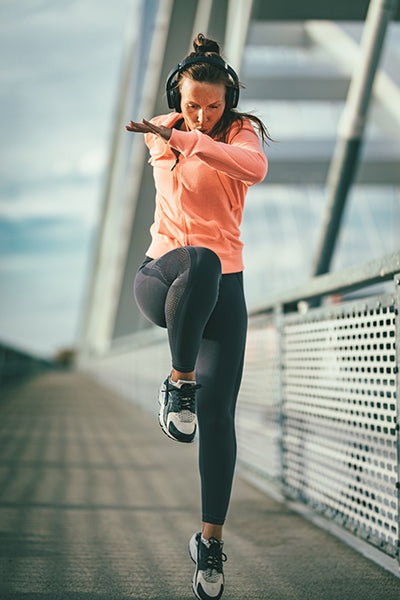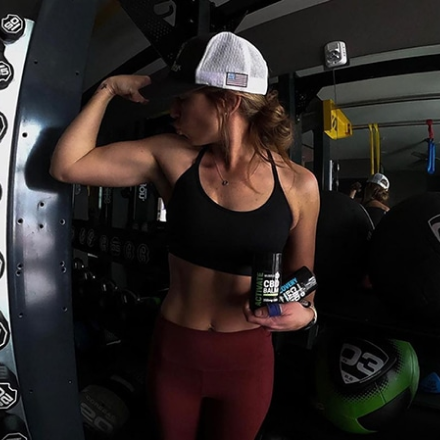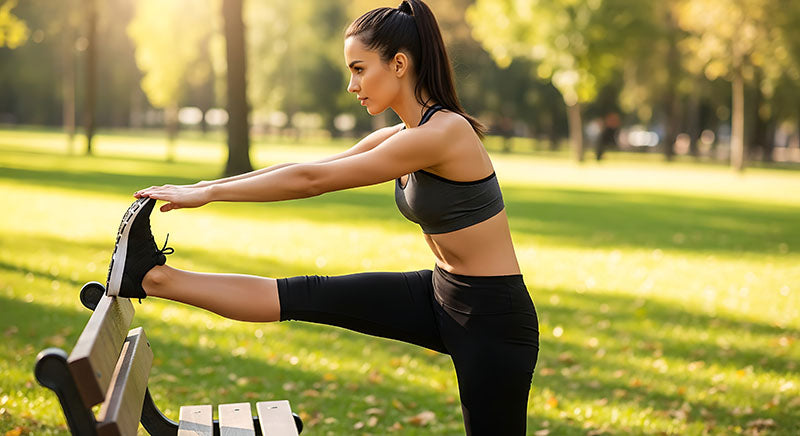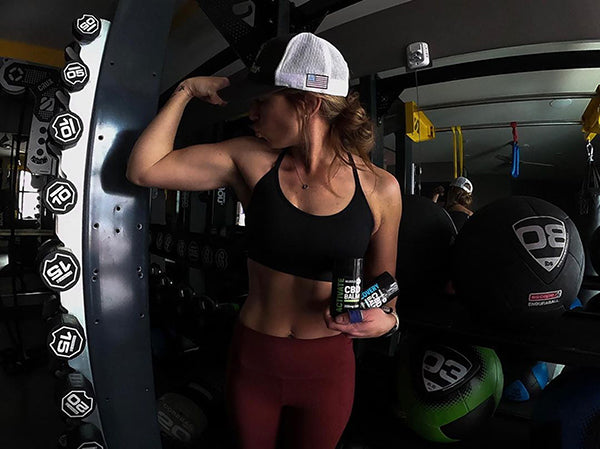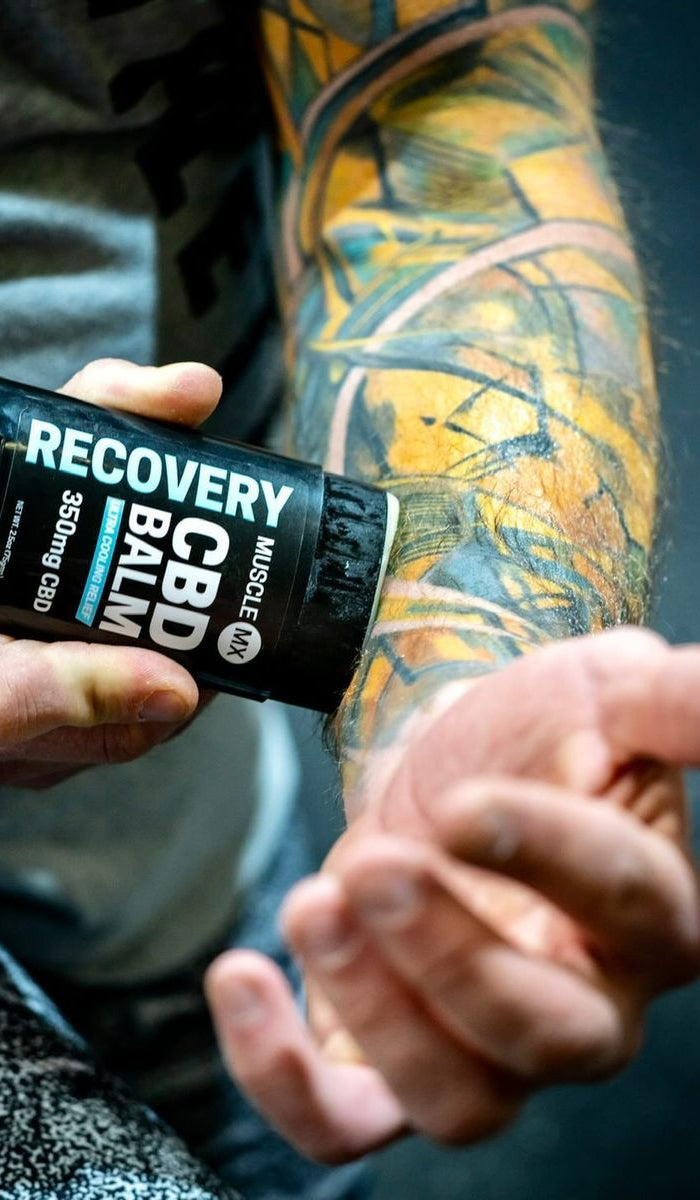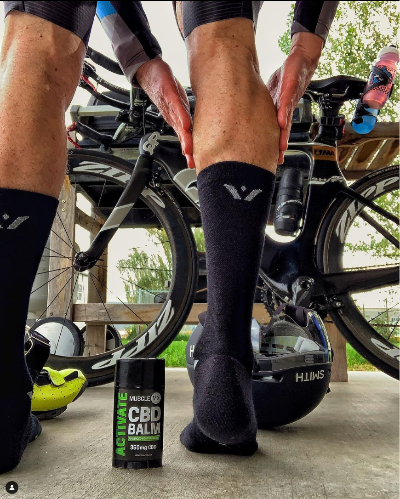How to Do Hamstring Exercises: A Trainer's Step-by-Step Guide
Key Takeaways
Master these essential hamstring training principles to build stronger, more resilient posterior chain muscles and prevent common lower body injuries.
-
Hamstrings are often weak, not tight - What feels like tightness is frequently weakness in disguise, requiring strengthening rather than just stretching
-
Start with Romanian deadlifts and glute bridges - These compound movements effectively target all three hamstring muscles while building functional strength
-
Balance quad-dominant patterns - Most people have stronger quads than hamstrings, creating injury risk that proper posterior chain training can correct
-
Use dynamic stretching before, static after workouts - Pre-exercise dynamic movements prepare muscles, while post-workout static stretches improve long-term flexibility
-
Progress gradually from bodyweight to weighted exercises - Begin with hamstring walkouts and stability ball curls before advancing to barbell movements
Strong hamstrings support everything from daily activities like climbing stairs to athletic performance in jumping and sprinting. Consistency in both strengthening and stretching creates the foundation for injury-free movement and optimal lower body function.
Introduction
Here's a surprising fact that might change how you think about your leg muscles: your hamstrings are often 50 to 80% weaker than the quadriceps muscles on the front of your thigh. That's a significant imbalance that many people don't even realize they have.
Your hamstrings work hard for you every single day. Walking to your car, climbing stairs, getting up from a chair — these muscles are constantly supporting your movement. When it comes to more athletic activities like sprinting or jumping, powerful hip extension becomes essential for peak performance.
Yet despite their importance, hamstring training often gets overlooked. Many people either skip it entirely or perform exercises with form that limits their benefits. It's a pattern we see repeatedly, and it can leave you vulnerable to discomfort and reduced performance.
So what exactly are we talking about when we say "hamstrings"? This muscle group sits along the back of your thigh and consists of three muscles: the biceps femoris, semitendinosus, and semimembranosus. Each plays a unique role in your movement patterns.
What's particularly interesting is how these muscles work with your quadriceps. While they're often described as opposing muscle groups, that doesn't mean one completely shuts off when the other activates. Your body is smarter than that — these muscles coordinate together to create smooth, efficient movement.
Understanding these muscles and how to train them properly can make a real difference in your daily activities and exercise performance. Whether you're dealing with tightness, looking to prevent discomfort, or simply want to move better, the right hamstring exercises can help you get there.
Let's explore the most effective ways to strengthen and stretch these important muscles, starting with options that work for beginners and progressing to more advanced techniques.
Understanding Your Hamstrings
Your hamstrings are more complex than they might appear. These muscles sit along the back of your thigh, creating a powerful group that supports nearly every movement you make. Unlike simpler muscles that have just one job, your hamstrings multitask — they work across multiple joints to keep you moving smoothly.
What muscles make up the hamstrings?
The hamstring group includes three distinct muscles, each with its own personality and function. Think of them as teammates that coordinate to create the movements you need.
Biceps Femoris: This muscle is unique because it has two heads — a long head and a short head. The long head originates from the ischial tuberosity of your pelvis, while the short head starts at the linea aspera on the back surface of your thighbone. Both heads join together to form a common tendon that attaches to the head of the fibula. What's interesting is how they're controlled — the long head gets signals from the tibial part of your sciatic nerve, while the short head receives instructions from the common fibular part.
Semimembranosus: You'll find this flat, broad muscle on the inner side of the back of your thigh. It starts from the ischial tuberosity and connects to the medial tibial condyle. This muscle sits deeper than its neighbor, the semitendinosus, and receives its nerve signals from the tibial nerve.
Semitendinosus: Positioned between the other two muscles, this largely tendinous muscle also begins at the ischial tuberosity but attaches to the inner surface of your tibia. Like the semimembranosus, it gets its signals from the tibial part of the sciatic nerve.
These three muscles contain thousands of long, elastic muscle fibers that enable contraction and movement. Here's something particularly noteworthy — all except the short head of the biceps femoris are biarticular muscles, meaning they cross two joints: both your hip and knee.
How hamstrings support movement and posture
Your hamstrings don't just bend your knee. They're involved in a surprising number of functions that keep your body moving efficiently and maintaining good posture.
Joint Movement: The primary job of these muscles involves knee flexion (bending your knee) and hip extension (moving your thigh backward). They also help with rotation — when your knee is bent, the biceps femoris rotates your leg outward while the semimembranosus and semitendinosus rotate it inward.
Walking Mechanics: During walking, your hamstrings activate during the final 25% of your leg swing, creating extension force at the hip while controlling knee extension. This timing is essential for controlling how your leg moves forward and preparing for when your heel strikes the ground.
Knee Protection: Your hamstrings act as dynamic stabilizers for your knee joint. Working together with your anterior cruciate ligament (ACL), they resist unwanted forward movement of your tibia during heel strike. Essentially, they help protect your knee from potentially harmful motion.
Posture Support: These muscles affect normal lumbar lordosis — the natural curve in your lower back — by influencing the position of your pelvic bones. They work together with your abdominal muscles to maintain proper pelvic position. When hamstrings contract to pull the back of your pelvis down, your abdominal muscles can contract to pull the front of your pelvis up.
Load Transfer: Your hamstrings play a crucial role in transferring forces between your upper body and legs, affecting tension in the thoracolumbar fascia. As your center of mass shifts forward, your hamstrings engage to provide necessary balance and stability.
Team Players: These muscles don't work alone. They partner with your gluteus maximus during powerful hip extension and when you're lifting your torso. When your glute muscles are weak — which is common if you spend a lot of time sitting — your hamstrings become overworked and overloaded.
Understanding how these muscles function gives you the foundation for choosing exercises that both strengthen and protect this important muscle group. Remember, effective hamstring training isn't just about making them stronger — it's about helping them work better with the rest of your body.
Why Hamstring Training Matters
Hamstring training isn't reserved for elite athletes or gym enthusiasts. These muscles influence nearly every aspect of your physical life, from how you feel during daily activities to your risk of injury.
Benefits for Athletes and Everyday Movement
Strong hamstrings deliver real performance advantages that extend far beyond the gym. When your hamstrings are properly developed, you'll notice improvements in jumping height, running speed, and explosive power during sports movements. This makes sense when you consider that the hamstrings make up approximately one-third of your leg muscle mass.
Your everyday movements rely heavily on these muscles too. Standing up from your desk chair, climbing stairs at home, or maintaining your balance while walking — all of these activities depend on hamstring strength. These muscles work closely with your glutes to propel you forward during walking and running.
Here's something that might surprise you: what feels like tight hamstrings often indicates weakness instead. As one certified strength coach explains, "A lot of times people will think their hamstrings are tight, but really, they're weak". This misleading sensation of tightness actually signals that your hamstrings need strengthening, not just stretching.
This becomes particularly important if you spend hours sitting each day. Whether you're at a desk, in your car, or relaxing at home, prolonged sitting places your hamstrings in a shortened position and contributes to weakness over time. Regular strengthening helps counteract these effects.
Common Issues From Weak or Tight Hamstrings
The consequences of neglecting hamstring training can be significant. Hamstring strain injuries rank as the most prevalent muscle injuries in track and field activities. What's concerning is that once injured, these muscles tend to cause prolonged symptoms and carry a high risk of re-injury, potentially affecting your performance for months.
Tight hamstrings create a cascade of problems throughout your body:
- Lower back discomfort and stiffness as tight hamstrings pull the pelvis backward, increasing pressure on lower back muscles and the lumbar spine
- Knee discomfort and instability because hamstrings are primary muscles for knee bending
- Difficulty walking or standing comfortably, affecting daily functioning
- Increased risk of muscle strains and tears, especially during sudden movements
- Reduced blood flow to the muscles, decreasing performance capacity
The imbalance between hamstrings and quadriceps presents another significant concern. Many people develop quad-dominant patterns, with their front thigh muscles dramatically stronger than their hamstrings. This imbalance can lead to knee discomfort or injury, especially during activities that involve sprinting, jumping, lunging, or squatting.
Weak hamstrings can also affect your posture, contribute to hip discomfort, create knee instability, and even cause abnormal walking patterns. Some hamstring injuries may take nearly a year to completely heal, which underscores why prevention through proper training is so important.
Regular hamstring exercises — from simple bodyweight movements to more challenging weighted options — remain one of the most effective ways to prevent these issues and support lower body health.
What Are the Most Effective Hamstring Exercises to Start With?
Now that you understand why hamstring training matters, let's dive into the exercises that can make the biggest difference. These four movements form the foundation of effective hamstring training, and they're suitable whether you're just starting out or looking to refine your technique.
Barbell Romanian Deadlift
The Romanian Deadlift (RDL) ranks as one of the most effective exercises for building hamstring strength and size. While it might look intimidating at first, this movement offers tremendous benefits for your entire posterior chain.
The setup is straightforward:
- Stand with feet shoulder-width apart, barbell positioned over midfoot
- Grip the bar with palms facing down, slightly outside your legs
- Keep a soft bend in your knees throughout the movement
- Push your hips backward while maintaining a flat back
- Lower the bar along your legs until you feel hamstring tension
- Drive your hips forward to return to starting position
What sets the RDL apart from conventional deadlifts is maintaining stiffer legs with less hip and knee flexion. This places greater emphasis on your hamstrings and glutes rather than your lower back.
Glute Bridge and Hip Thrust
These exercises work beautifully to target your hamstrings while building strong glutes:
Glute Bridge: Lie on your back with knees bent and feet flat on the floor. Drive your heels into the ground, lifting your hips until thighs align with your torso. For best results, hold the contraction for 2 seconds before lowering.
Barbell Hip Thrust: This more advanced variation uses a bench to support your upper back while adding barbell resistance across your hips. The increased range of motion allows for heavier loading, making your posterior chain work harder.
Seated and Lying Leg Curls
Both variations effectively isolate your hamstrings through knee flexion:
Seated Leg Curls: Research shows seated curls produce greater muscle growth (approximately 14% versus 9%) compared to lying leg curls. This advantage comes from training your hamstrings in a lengthened position.
Lying Leg Curls: Still valuable, this variation places less stress on knee joints while allowing focused isolation of the biceps femoris.
Kettlebell Swings for Power
Kettlebell swings develop explosive hamstring power through dynamic hip extension. A study found the hip-hinge style swing elicits greater overall hamstring muscle activation than other swing variations.
The technique requires precision:
- Stand with feet wider than shoulder-width
- Grasp the kettlebell with both hands
- Hinge at hips, swinging the bell between your legs
- Explosively drive hips forward, propelling the kettlebell forward
- Keep your back flat and core tight throughout
This ballistic exercise not only strengthens your hamstrings but simultaneously engages your core and upper back muscles. It's particularly effective for building the explosive power that translates to better athletic performance.
Bodyweight and Beginner-Friendly Options
You don't need a gym membership or expensive equipment to start building stronger hamstrings. These bodyweight exercises offer an excellent starting point, whether you're new to hamstring training or simply prefer working out at home.
Hamstring Walkouts
Don't let the simplicity of hamstring walkouts fool you — this exercise reveals exactly where your hamstring and glute strength stands while helping you build it. The movement challenges your muscles in multiple ways, working both the lengthening and holding phases of muscle contraction.
Here's how to perform them:
- Lie on your back with knees bent and feet flat on the floor
- Lift your hips into a bridge position, creating a straight line from shoulders to knees
- Keep your hips elevated as you alternately walk your feet away from your body in small, controlled steps
- Once your legs are nearly straight, carefully reverse the movement to return to the starting position
What makes this exercise particularly valuable is its emphasis on eccentric strength — the ability to control movement as your muscles lengthen. Research shows this type of training is essential for injury prevention. Plus, the exercise teaches your glutes, hamstrings, and core to work as a team, improving your overall posterior chain coordination.
Stability Ball Hamstring Curls
This exercise ranks among the most effective bodyweight options for targeting your entire hamstring complex. As physical therapist Erica Friedman notes, "It's quite advanced due to the stability demands".
Start by lying on your back with your heels resting on a stability ball. Lift your hips to form a straight line from shoulders to heels, then dig your heels into the ball and slowly curl it toward your glutes by bending your knees. The key is keeping your hips elevated throughout the entire movement.
No stability ball at home? You can substitute a foam roller instead.
Single-Leg Glute Bridge
Ready to challenge one side at a time? The single-leg glute bridge intensifies hamstring engagement by isolating each leg individually. According to fitness expert David Otey, "Your single-leg glute bridge stance should look like your standard glute bridge stance".
Begin in your normal bridge position, then extend one leg while keeping the other foot planted. Drive through your working foot to raise your hips, maintaining alignment between your shoulders, hips, and working knee. Research shows this exercise produces high gluteal muscle activity compared to other strengthening movements.
These exercises build the foundational strength that translates directly to better athletic performance and easier daily movement. Remember, consistency matters more than complexity when it comes to building hamstring strength.
What About Flexibility and Injury Prevention?
Strength training is only part of the equation when it comes to healthy hamstrings. Flexibility work plays an equally important role in keeping these muscles functioning well and reducing your risk of injury. Try a heated balm before activity to help fire up the hamstring.
Think about it this way — if your hamstrings are strong but tight, you're still setting yourself up for potential problems. That's why proper stretching techniques should be part of your routine, not an afterthought.
Simple Hamstring Stretches You Can Do Anywhere
You don't need special equipment or a lot of time to work on hamstring flexibility. Here are three effective stretches that can make a real difference:
Lying Hamstring Stretch: Lie on your back, wrap a towel around one thigh, and gently straighten the knee until you feel a stretch. Hold for 30 seconds, then switch legs. This position allows you to control the intensity while staying comfortable.
Standing Hamstring Stretch: Stand upright, place one leg forward with the foot flexed, heel pushed into the ground. Gently lean forward, keeping a neutral spine. You can do this almost anywhere — at work, at home, or even at the gym between exercises.
Seated Hamstring Stretch: Sit with one leg extended straight, the other bent with foot facing inward. Bend forward at the waist while keeping your back straight. This is perfect for those times when you've been sitting for too long.
When Should You Stretch — Before or After Exercise?
The timing of your stretching can make a significant difference in its effectiveness. Here's what you need to know about the two main types of stretching:
Static stretching involves holding a position for extended periods, typically 30-90 seconds. Dynamic stretching, on the other hand, uses controlled movements through your full range of motion.
Research shows that multiple sessions of static stretching can improve hamstring range of motion more effectively than dynamic stretching over time. However, dynamic stretching offers benefits for both static and dynamic flexibility, while static stretching primarily helps with static flexibility.
So when should you use each type? Dynamic stretching works best before your workouts. It increases blood flow, activates your muscles, and improves joint mobility. Think of it as preparing your muscles for the work ahead.
Static stretching, however, is most beneficial after exercise as part of your cool-down routine. There's actually research showing that static stretching before activity can temporarily reduce muscle strength and power. But when you do it after your workout, it helps prevent stiffness by returning your muscles to their pre-exercise length.
Remember, consistency is what really matters when it comes to developing and maintaining hamstring flexibility. Whether you have five minutes or twenty, regular stretching will serve you better than occasional long sessions.
Final Thoughts
Your hamstrings play a bigger role in your daily life than you might realize. From the moment you get out of bed to every step you take throughout the day, these muscles are working to support your movement and keep you stable.
What we've covered in this guide gives you the tools to address one of the most common muscle imbalances people face. Remember, that feeling of "tightness" in your hamstrings might actually be telling you something different than you think. Often, it's not about stretching more — it's about building strength in muscles that have been overlooked for too long.
The exercises we've explored, from simple bodyweight movements to more challenging barbell exercises, all work toward the same goal: creating balance in your lower body. Whether you're dealing with discomfort, looking to improve your athletic performance, or simply want to move better as you go about your day, consistent hamstring training can make a real difference.
Start where you are right now. If you're new to this type of training, those bodyweight exercises are a perfect place to begin. As you get stronger, you can gradually add more challenging movements to your routine. The key is consistency — regular attention to these muscles will serve you better than occasional intense sessions.
Your body is designed to work as a connected system, and your hamstrings are an important part of that system. When they're strong and flexible, everything from your posture to your performance can improve. When they're weak or tight, other areas of your body often have to compensate, which can lead to discomfort and movement limitations.
The time you invest in proper hamstring training is an investment in your overall well-being. Whether you're an athlete looking to improve performance or someone who wants to feel better during everyday activities, taking care of these muscles can help you maintain an active, comfortable lifestyle for years to come.
FAQ's About Hamstring Exercises
Q: What are the most effective exercises for targeting hamstrings?
A: The most effective hamstring exercises include Romanian deadlifts, glute bridges, leg curls, and kettlebell swings. These compound movements engage multiple muscles in the posterior chain, with Romanian deadlifts being particularly effective for hamstring development.
Q: How can beginners start strengthening their hamstrings at home?
A: Beginners can start with bodyweight exercises like hamstring walkouts, stability ball hamstring curls, and single-leg glute bridges. These exercises are effective, require minimal equipment, and help build foundational strength before progressing to more advanced movements.
Q: When is the best time to stretch hamstrings - before or after a workout?
A: Dynamic stretching is best before workouts to prepare muscles for activity. Static stretching is more effective after workouts as part of your cool-down routine. This approach helps improve flexibility while minimizing the risk of decreased performance during exercise.
Q: Why do my hamstrings always feel tight?
A: What feels like tightness in the hamstrings is often actually weakness. This sensation can be misleading, indicating a need for strengthening exercises rather than just stretching. Regular strength training can help address this issue and improve overall hamstring function.
Q: How can I prevent hamstring injuries during exercise?
A: To prevent hamstring injuries, focus on balanced training that includes both strengthening and flexibility work. Gradually progress from bodyweight to weighted exercises, maintain proper form, and ensure you're not overtraining. Regular dynamic warm-ups and post-workout static stretching also contribute to injury prevention.
References
https://fitbod.me/exercises/hamstrings
https://www.menshealth.com/fitness/a26786932/best-hamstring-workouts/
https://www.acefitness.org/continuing-education/certified/february-2018/6896/ace-sponsored-research-what-is-the-best-exercise-for-the-hamstrings/?srsltid=AfmBOoqfO8AVZg3qhhuqZWb0OdM86u3whl4SSnVuCw-0ogJYuGgRQBhh
https://www.ncbi.nlm.nih.gov/books/NBK546688/
https://teachmeanatomy.info/lower-limb/muscles/thigh/hamstrings/
https://my.clevelandclinic.org/health/body/21904-hamstring-muscles
https://www.physio-pedia.com/Hamstrings
https://pmc.ncbi.nlm.nih.gov/articles/PMC8294189/
https://blog.nasm.org/certified-personal-trainer/the-problem-with-the-hamstring-problem
https://www.health.harvard.edu/staying-healthy/are-your-hamstrings-working-double-duty
https://www.gymshark.com/blog/article/best-hamstring-exercises?srsltid=AfmBOooV5PpfKE-s9uPWPhSRNWKyZRvWFU1edofYJrwzqrEb226uNRmq
https://www.womenshealthmag.com/fitness/a19962155/hamstring-exercises/





























